Protests Flare Up At Funeral Of Young Man Killed By Iran’s IRGC
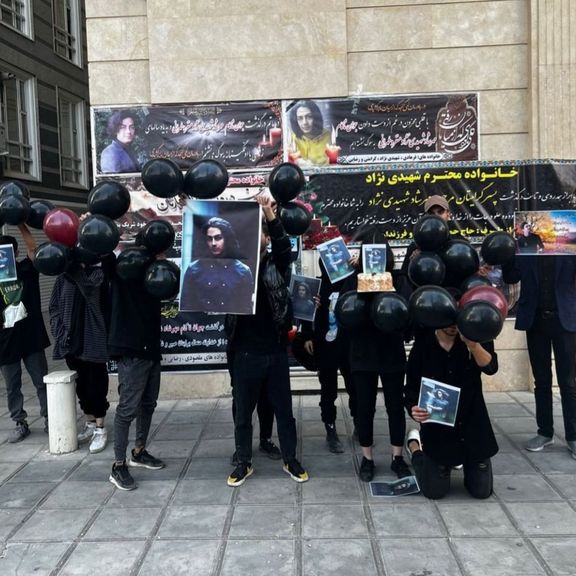
A large crowd in the central city of Arak attended the funeral of Mehrshad Shahidi, a 20-year-old chef who was killed by the Revolutionary Guard forces on October 25.

A large crowd in the central city of Arak attended the funeral of Mehrshad Shahidi, a 20-year-old chef who was killed by the Revolutionary Guard forces on October 25.
Mehrshad Shahidi was arrested October 25 during antigovernment protests and beaten to death with baton at the IRGC Intelligence’s detention center.
Security forces have reportedly fired tear gas to disperse the mourners who were chanting “Everyone who is killed will be supported by thousands more,” and "We don’t want, we don’t want the Islamic Republic.”
Iranian authorities have denied any responsibility in Shahidi’s death claiming that they will announce the cause of his death later.
Chief Justice of the province Abdolmehdi Mousavi said on Friday that “there are no signs of fractures in the arms, legs, skull, or any brain injury.”
Meanwhile, Deputy Governor of the province, Behnam Nazari alleged that “the rumors are being spread by anti-Iran media, but no bullets have been shot at Mehrshad Shahidi.”
Funerals and memorial ceremonies have become occasions for more protests and new violence by security forces.
The Norway-based Iran Human Rights organization says at least 253 people including 34 children have been killed by the Iranian security forces during the nationwide protests so far.
According to the organization, on Thursday and Friday alone, at least 16 people, including 4 women, were killed by regime forces in different cities, particularly in Kurdish regions.
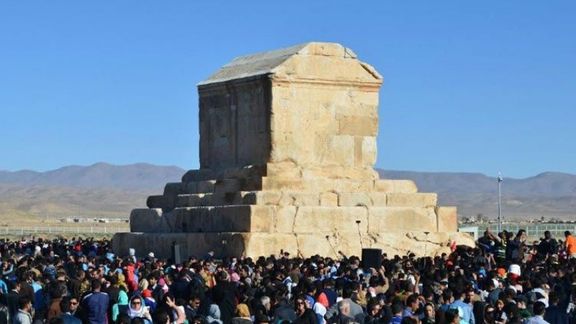
The Islamic Republic has banned people from visiting the Pasargadae and Persepolis, ancient sites dating back to Achaemenid Empire on Cyrus the Great Day, in fear of antigovernment protests.
Ordered by the Islamic Republic’s Supreme National Security Council, the Cultural Heritage Organization announced the three-day ban effective until after Saturday, October 29, which is considered by some historians as the death anniversary of Cyrus the Great, the founder of the first Persian empire the Achaemenids.
To commemorate the king, many Iranians visit the Tomb of Cyrus on October 29, a mausoleum located in Pasargadae archaeological site as well as Persepolis, the ceremonial capital of the Achaemenid Empire, in the southern Fars province.
In recent years, the Islamic Republic implemented security measures and even blocked roads leading to Pasargadae and Persepolis to prevent people from visiting the ancient sites or celebrating the occasion, considered as symbols of monarchy by the clerical regime.
The measures were especially intensified since October 2016, when thousands of people gathered at the historical site and chanted antigovernment slogans such as "Iran is our homeland, Cyrus is our father." During and following the event, security forces arrested several people and the prosecutor of Shiraz, the provincial capital, announced "judicial cases" against the organizers.
Iran is engulfed in unrest as people are holding daily protests against the Islamic regime since the death of 22-year-old Mahsa Amini, who died in custody of the hijab police.
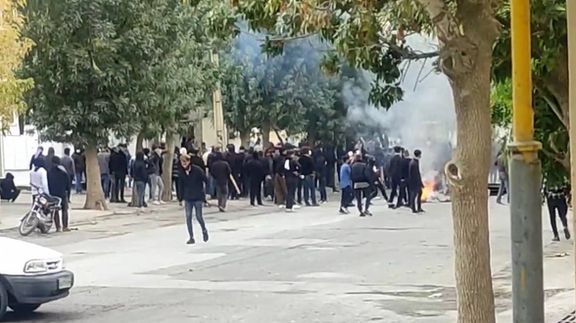
Anti-government protests in Iran continued Friday in its second month with people in different parts of the country venting anger at the clerical regime.
Friday coincided with the fortieth day ceremony after the death of several victims killed by security forces in September.
People in Zahedan and Saravan in the southeastern Sistan-Baluchestan province once again staged antigovernment protests after Friday prayers and chanted slogans against Supreme Leader Ali Khamenei. One was killed and several injured after security forces opened fire on demonstrators.
During the Bloody Friday in Zahedan on September 30 security forces killed at least 93 people, and injured hundreds more. Zahedan is one of the few Sunni-majority cities in predominantly Shiite Iran.
Several Kurdish cities also witnessed anti-regime protests on Friday, with people mostly observing the funeral and commemoration ceremonies of their comrades who were killed in earlier demonstrations.
In Kermanshah, Saqqez, Qasr-e-Shirin, Mahabad, Babol and Arak people mourned for the losses and chanted anti-government slogans vowing to take revenge on the clerical rulers.
According to Norway-based Iran Human Rights organization, at least 253 people including 34 children have been killed by government forces during the nationwide protests so far.
Demonstrations started in mid-September, when a 22-year-old woman, Mahsa Amini was killed in custody of hijab or morality police.
The protests first erupted in Mahsa Amini’s hometown Saqqez and capital Tehran and soon spread to almost 150 other cities and towns and garnered support from Iranian expatriate communities around the world as well as foreign governments and officials.
Iran Human Rights Organization says on Thursday and Friday alone, at least 16 people, including 4 women, were killed by security forces in different cities, particularly in Kurdish regions.
Reports also say a great number of protesters have been arrested and subjected to physical and mental torture and ill-treatment.
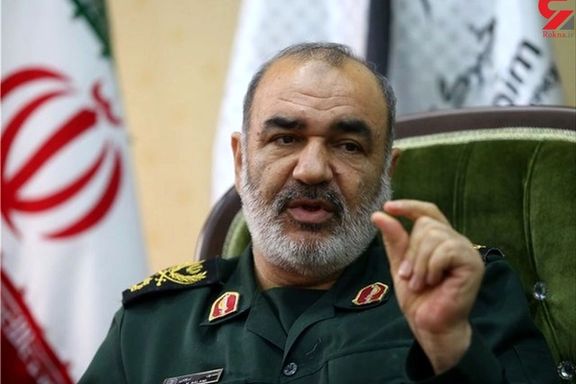
“Many were under duress to force them to make false televised confessions, with some already aired. Protesters are also being held in unofficial buildings without any monitoring and supervision. Prisons and detention centers are filled over capacity, without access to sanitary facilities. Children under 18 are amongst those detained,” says Iran Human Rights Organization.
Videos received by Iran International shows people in Bukan, Mahabad, Sanandaj and several neighborhoods in Tehran continued their protests into the night and early hours of Saturday.
Two students were also abducted Friday night in a dormitory at Ahvaz Jundishapur University, southwest of Iran and in other universities, with details emerging on Saturday.
However, the Islamic Republic continues its customary policy of trying to link the protests to foreign countries and pretend the majority still supports the clerical regime.
On Friday, regime’s intelligence ministry and the IRGC released a joint statement blaming the CIA and Israel for creating chaos in Iran. The statement also accused the journalists who first covered the death of Mahsa Amini as “trained agents”.
Commander of Revolutionary Guard Hussein Salami threatened the protesters on Saturday saying that “This is the last day of protests. Don’t take to streets anymore!”
Salami also addressed the youths saying that they are deceived by the United States, asking them “to take off the uniforms of US soldiers,” thus accusing them of doing “the enemy’s” work.
It seems that the Islamic Republic is now scared by the huge turnout during protests and the total rejection of the regime by demonstrators. In the past two days hardliners in the government issue threatening statements; a tactic that might not work on determined protesters under social and economic pressure.
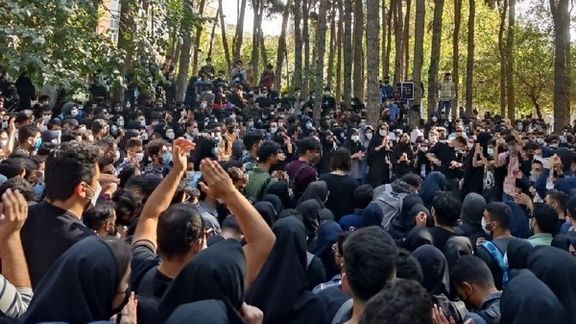
The hardliner government in Tehran is signalling its readiness to get even tougher with protesters, who have come out every single day in the past six weeks.
The Iranian government’s official mouthpiece, Iran newspaper, which is owned by the administration of President Ebrahim Raisi, warned Iranians October 27 that security forces are going to get even tougher, while at least 270 protesters have already been killed.
In a commentary entitled “The end of Toleration,” the daily said after the attack on the Shah Cheragh Shrine in Shiraz, the regime will no longer tolerate any protests. This comes while the government has attributed the attack on the shrine to the Islamic State (ISIS) with which the protesters have not shown any sympathy and have likened the regime to ISIS terrorists.
Iran newspaper charged that it was the protests that has encouraged ISIS to undermine Iran’s security.
In a similar stance, hardliner member of the Iranian Parliament Esmaili Kowsari, said in Tehran that the officials are tasking new decisions about how to tackle the ongoing unrest and warned, “You will see that the situation will be different from previous days.”
Kowsari said on Iranian state television on Thursday: “Perhaps the rioters can still scare the businesses like they did on the previous days, but they can never attract the sympathy and support of many Iranians.” He further warned that officials are making new decisions about encountering what he called “riots”.
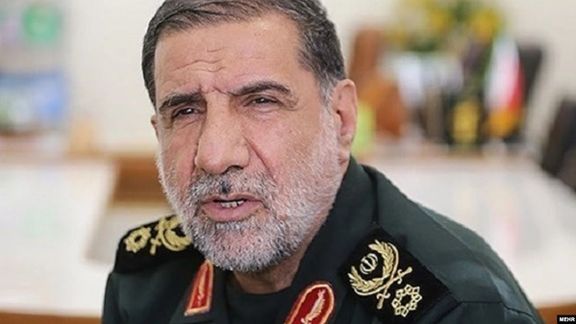
The hardliner lawmaker who is a senior officer of the Revolutionary Guard (IRGC) and was previously in charge of Tehran’s security for over a decade, claimed that “compared to the protests in 2019 that followed a sudden fuel price rise, there are fewer protesters in the streets and the protests are generally less intense.”
He warned the protesters while referring to the attack in Shiraz that “foreign countries whose hybrid war in Iran has not been fruitful, have turned to terrorism in order to scare Iranians.” Kowsari made the comment while most Iranians on social media believe, based on previous experience, that the government was behind the attack with the aim of derailing the protests.
Stressing that the government will change its approach, Kowsari said that so far it hoped the people would realise that their slogans were not true. Most slogans chanted by protesters vehemently rejected Khamenei and the Islamic regime. Meanwhile Kowsari accused foreign countries of being behind the ongoing uprising and promised to deal with those countries.
On Friday, prayer Imams in various cities, who are directly appointed by Khamenei, called on the security forces to adopt tougher measures against the protesters. Mohammad Javad Haj Ali Akbari, the imam in Tehran vowed to take revenge from the perpetrators of the attack on the shrine in Shiraz and blamed the United States and Israel for the blood spilled in Shiraz. He said in a controversial statement: “The United States is the same as the Islamic States. Only it wears perfume.”
He said the attack in Shiraz took place because the demonstrators had played with the country’s security and warned that no one can do that any longer. Haj Ali Akbari said: “We blame the United States and Israel for all the bloodshed and promise to take revenge for them.”
The Imam in Isfahan, Abolhassan Mahdavi, claimed that regime’s security forces attack the women among the protesters because Western countries encourage them not to wear hijab. He further claimed that wearing hijab will cleanse the society.
The Friday Imam of Isfahan further charged that protesters have received money from foreigners to undermine the importance of hijab. He called on the police and other security forces as well as the judiciary to forcefully deal with those who are against hijab. He charged that not having hijab is tantamount to prostitution.

Iran's two top intelligence organs issued a joint statement claiming that foreign intelligence, especially the CIA, have a significant role in popular protests.
The Islamic Republic’s Intelligence Ministry and the Intelligence Organization of the Revolutionary Guard issued the statement on Friday, alleging that a mission called “Iran’s Destruction Project” that was earlier implemented in countries like Afghanistan, Iraq, Syria, Yemen, and Libya has ended in a “humiliating defeat” in Iran.
The joint statement has introduced Niloufar Hamedi and Elahe Mohammadi, twp women journalists arrested days after protests began in September, as “foreign agents.”
They say that Niloufar Hamedi, who published the photo of the deceased Mahsa Amini on a hospital bed, was “among the people trained in special courses abroad.” Amini’s death from severe head trauma in police custody triggered the current popular protests across the country. The unrest has been the longest sustained movement against the Islamic Republic.
“Using the cover of a journalist, she was one of the first people who arrived at the hospital and provoked the relatives of the deceased and published targeted news,” adds the statement.
The statement has offered no evidence about the two journalists having travelled abroad, received training or having any ties with foreign organizations.
The ominous statement came as several Iranian hardliners Friday signaled that the government will resort to more force to crush the popular protests.
The IRGC and the Intelligence Ministry have also accused Elahe Mohammadi, another journalist of working for foreign services saying that “she instantly attended the funeral ceremony of Mahsa Amini in her birthplace Saqqez to provoke her relatives by circulating the news and images of the funeral ceremony, and burial.”
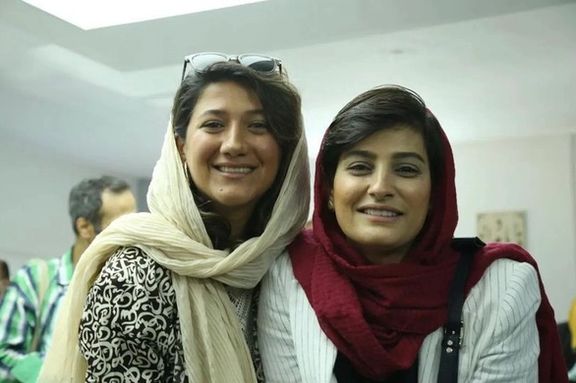
The two intelligence bodies also claimed that Mohammadi is “trained by the American mafia regime in foreign countries,” adding that together with Niloufar Hamedi, Mohammadi has “played the role of primary sources of news for foreign media.”
In this statement the Iranian intelligence organizations accused Washington of allocating billions of dollars every year to find elements in Iran and connect them to “Western networks under the cover of human rights activities and promotion of democracy.”
The statement claims that after the downing of a Ukrainian plane over Tehran in January 2020 and the collapse of Abadan’s Metropol building “incidents”, US agents “urged their media to use every challenge and problem to provoke an inefficiency crisis [in Iran] and focus on the illegitimacy of the Iranian establishment.”
The IRGC and Intelligence Ministry say the United States tried “to attribute the effect of sanctions on people’s lives to the inefficiency of the Islamic Republic through making false demands in cultural and social fields.”
The statement further claims that in the past years, US and Israeli intelligence services have made extensive efforts to “transfer money and arm criminals with weapons to enable them to carry out sabotage operations against important centers and facilities, and use violence against the civilians, police forces and the Basij [militia].”
It also adds that “enemy’s” intelligence services try to influence teachers, workers, and students through “creation of fake syndicates and leaders” to “cause chaos” in the country.
The intelligence bodies further stated that “enemies” organized and implemented a “global media war” against Iran, through TV networks and social media.
It accuses Twitter, WhatsApp, and Instagram of “ignoring their own regulations” to pave the ground for the spread of “fake news.”
Referring to the measures taken by the US government to provide free satellite internet for the Iranian people, they said “The Starlink project is to expand America’s internet dictatorship!”
In the end, the statement has once again threatened the “enemies” saying that their “crimes in recent events will not be forgotten or forgiven.”
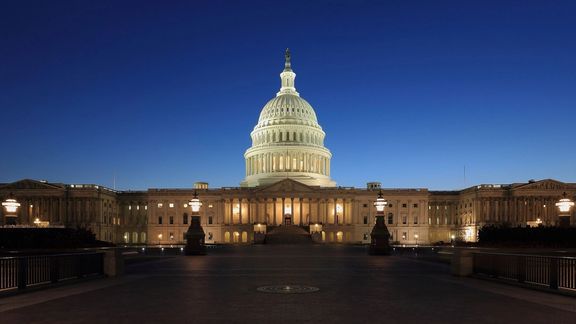
A bipartisan and bicameral group of US lawmakers have urged Google, Amazon, Meta and other tech companies to facilitate access to online tools for Iranian protesters.
The move, led by Representative Tom Malinowski (D-NJ), was made on Thursday after the US Treasury Department relaxed tech restrictions for Iran last month. The letter for the call was signed by at least 10 lawmakers, including Senator Bob Menendez (D-NJ) and Representative Claudia Tenney (R-NY).
The letter, which was sent to heads of Google, Amazon, Apple, Meta, Microsoft and Digital Ocean, calls on the companies to "provide expeditiously and lawfully the tools Iranians need to circumvent government blockages." “As the Iranian regime continues to brutally repress those protesting for freedom, access to communications services is key,” read the letter.
All the companies work on technologies that include cloud and hosting services, messaging platforms and tools, developer and analytics tools, and access to app stores.
Frustrated with tech companies' lack of action to support the Iranians, Malinowski told Axios that “The ball is really in their court now to deploy technologies that the US government is permitting to ensure Iranians can actually communicate safely and securely.” He added, “Iranians are risking their lives, and these big companies seem to be unwilling to risk anything, and that's just wrong."
Internet restrictions and the use of anti-online censorship tools have surged in Iran since protests began in September. Iranian hardliners say restrictions will remain in place as long as street protests continue.